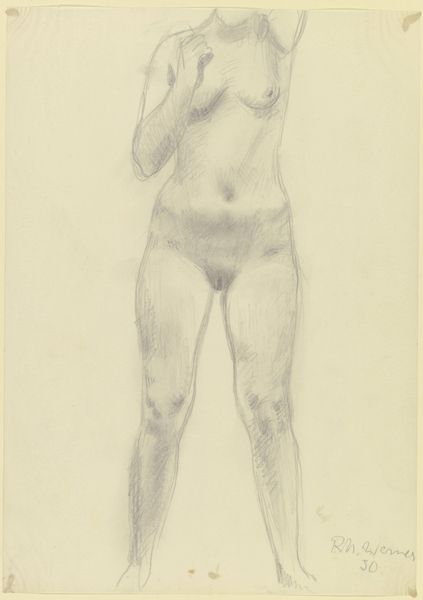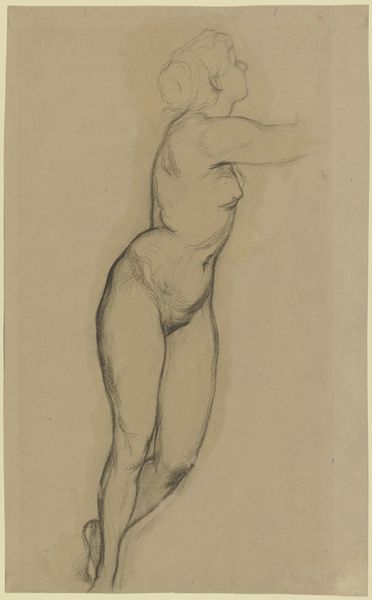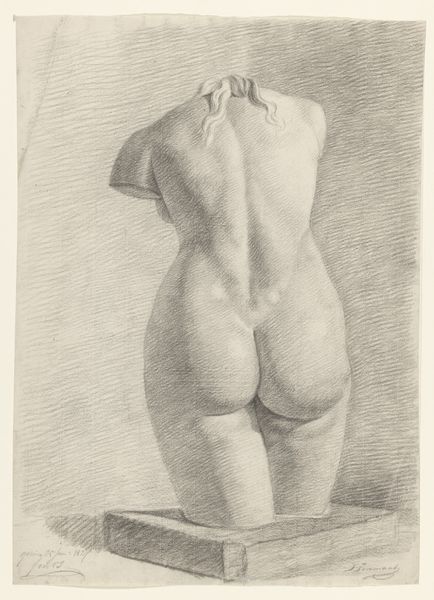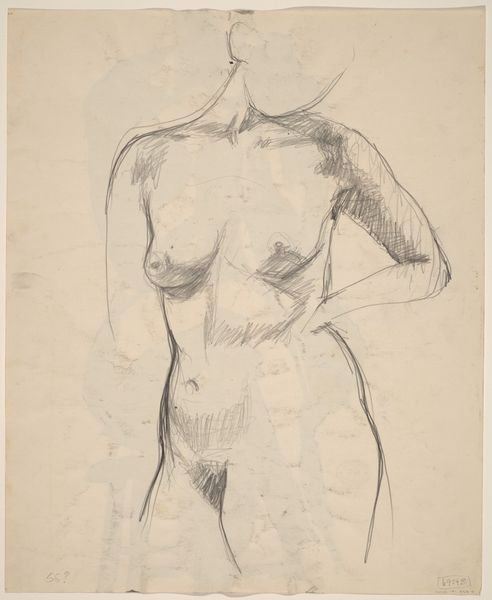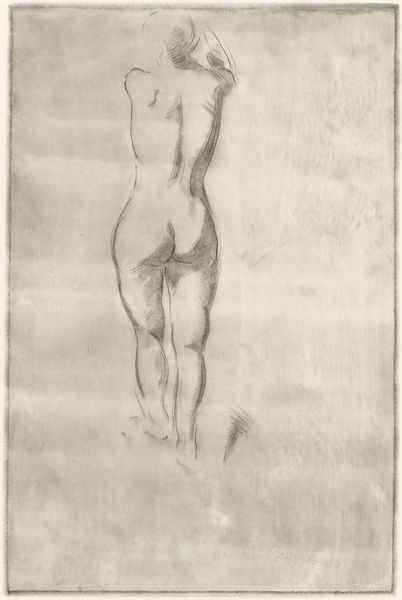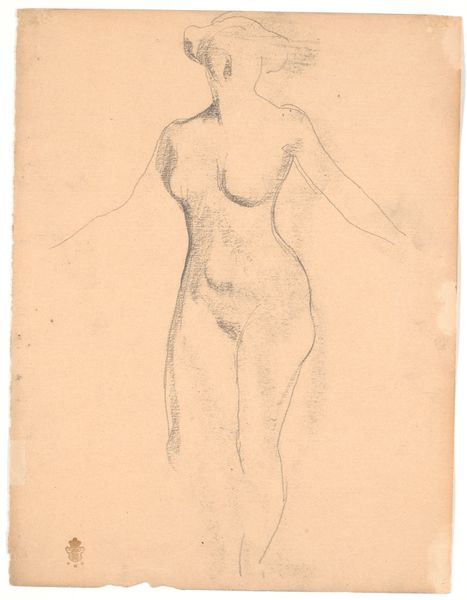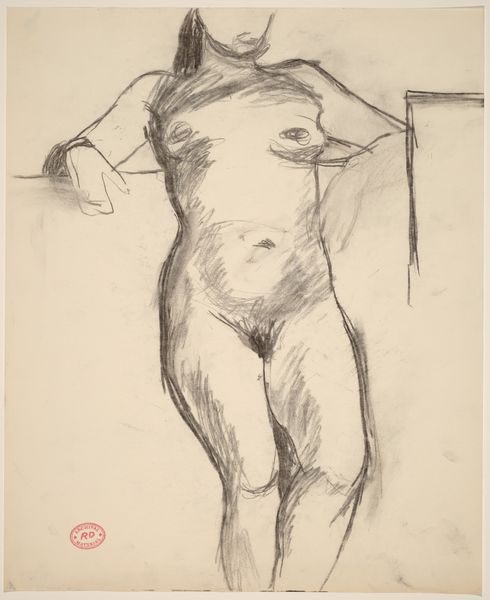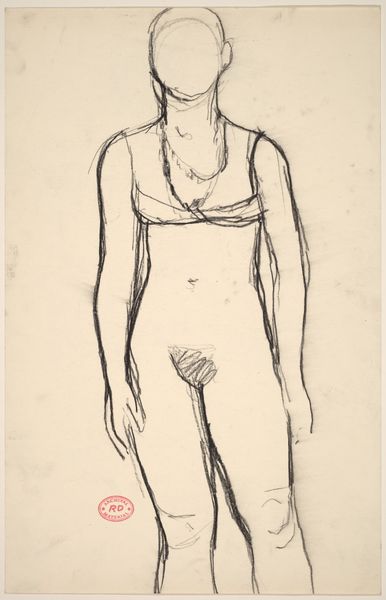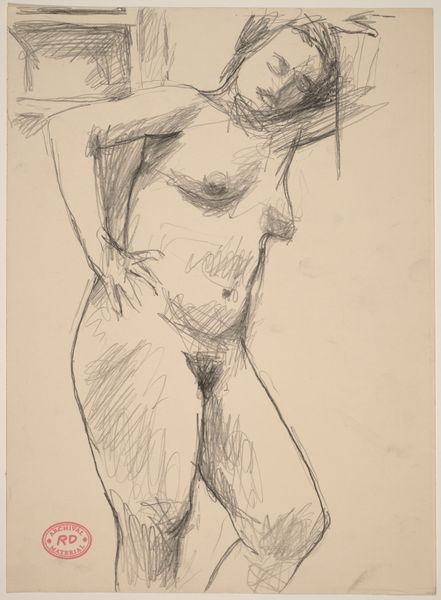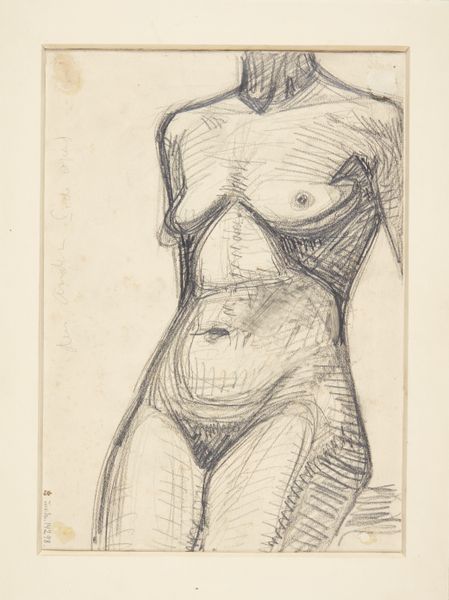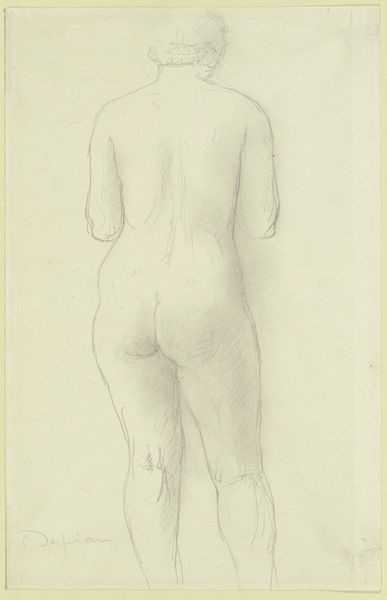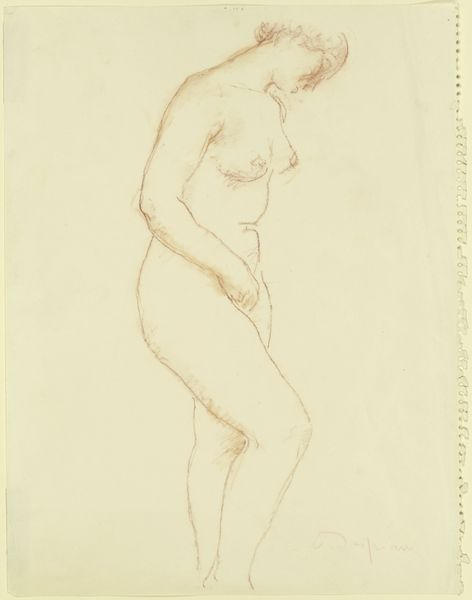
drawing, pencil
#
pencil drawn
#
drawing
#
pencil sketch
#
figuration
#
pencil drawing
#
pencil
#
academic-art
#
nude
Dimensions: height 244 mm, width 344 mm
Copyright: Rijks Museum: Open Domain
Curator: Well, hello there. We are standing before a work titled "Liggende naakte vrouw" by Harrie Verburg. The date it was executed is approximated to be between 1924 and 1947, rendered with pencil on what seems to be sketching paper. What are your first thoughts? Editor: There's something raw about it. Almost like an anatomical study, but the pose feels quite vulnerable, especially with the face turned away. The repeated hatching of the pencil creates so much tonal variation! Curator: Exactly. Let's talk about that hatching. Verburg's use of repetitive lines isn't just for shading; it's the very structure of the image. Think about the economic accessibility of pencil during that period. Drawing was, and often is, a tool of both artistic study and, often, necessity. There's a certain honesty in the use of such a readily available material. Editor: That resonates. And how this simple medium can create such nuanced representation, the almost sculpted volume. How does its availability relate to the image making and reception, historically? Curator: Well, this falls between the wars, a period of massive social change and shifting attitudes towards the human form. While academic traditions held strong, artists increasingly challenged conventional depictions. Verburg, using the humble pencil, enters that discourse but perhaps avoids the direct challenges of, say, painting or sculpture. The drawing allows for study and observation without the immediate pressure of 'high art' expectations, which had very particular social connotations tied to the institution. This potentially allowed for more raw expression outside rigid societal parameters. Editor: So, it becomes both a personal investigation and a subtle comment on the prevailing artistic norms. What do you feel are the lasting qualities of a work like this? Curator: It underscores the intrinsic value of material investigation within artistic expression. The interplay between material availability and the changing socio-political view allows us to read not just beauty but intent. Editor: A compelling tension to be sure, where both intimate exploration and material realities give a different impression now than what it may have produced then. The way we access materials shapes not just the art, but its narrative too.
Comments
No comments
Be the first to comment and join the conversation on the ultimate creative platform.
